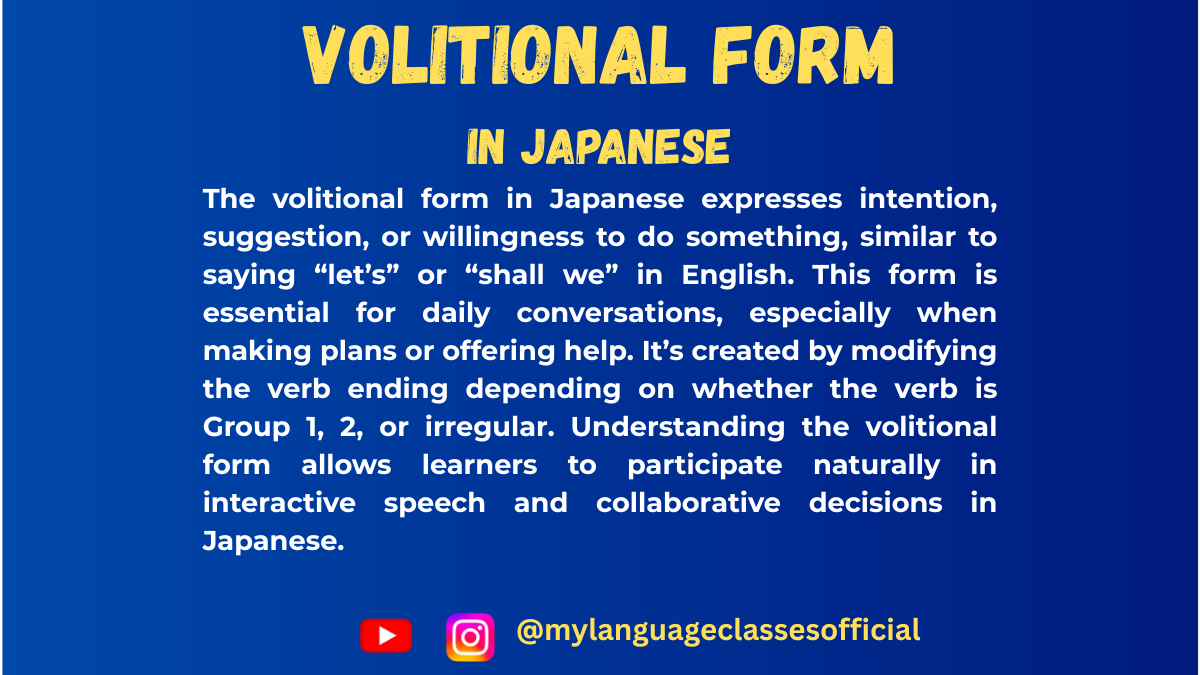Your cart is currently empty!
Tag: how to use volitional form in japanese

Understanding Volitional Form in Japanese
Volitional Form in Japanese
The volitional form in Japanese is a versatile and essential grammatical structure. It’s often used to express intentions, suggestions, or invitations. Think of it as the Japanese equivalent of saying, “Let’s” or “Shall we?” in English.… Read more

